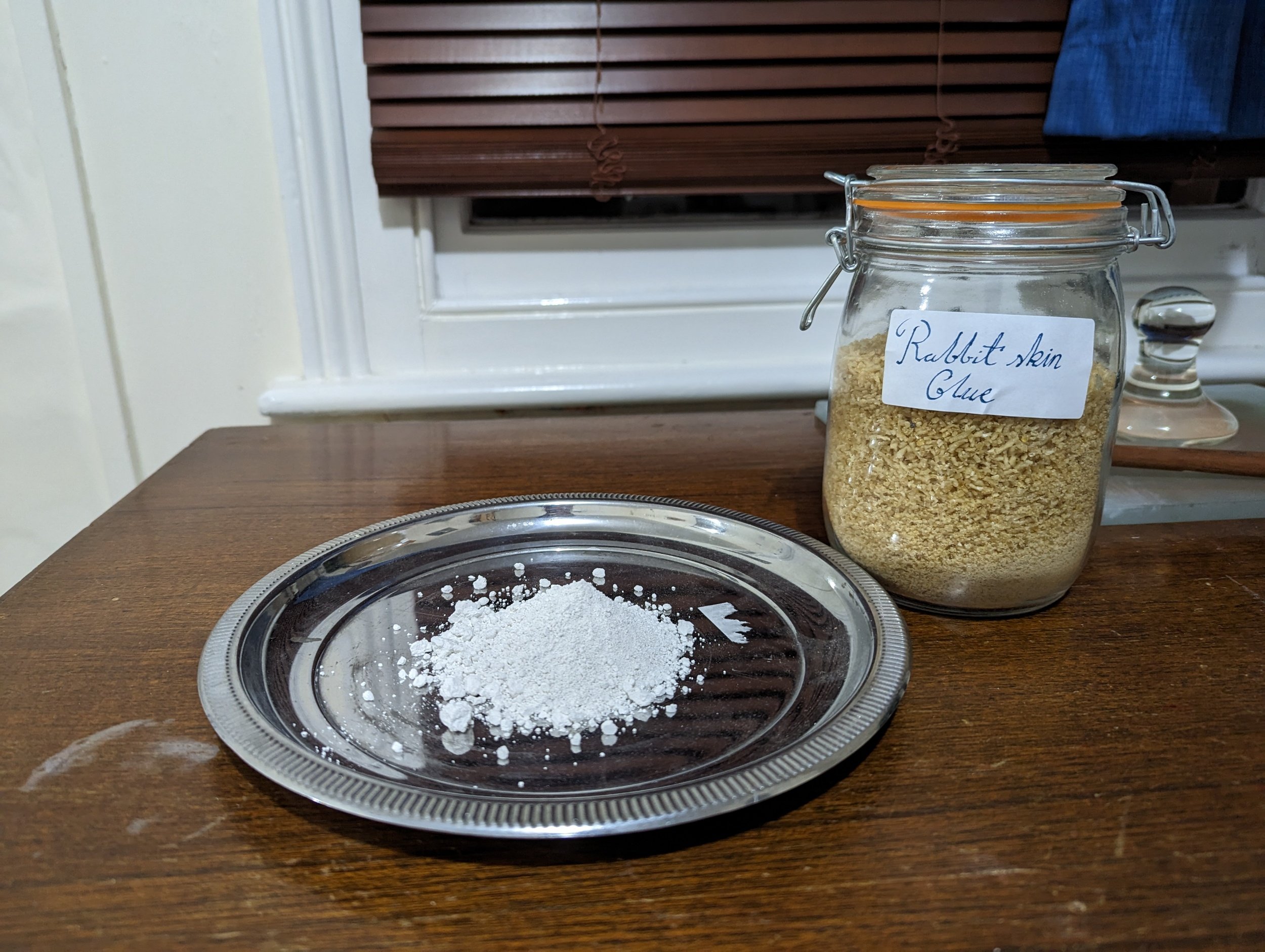What is gesso?
The ingredients for traditional gesso: rabbit skin glue and calcium carbonate (chalk).
Literally translated, gesso is Italian for chalk, plaster, or gypsum. In practice, this is reasonably representative of what it materially is. Indeed, the key ingredients in gesso are chalk (or other calcium-based minerals) and a binder.
Traditional gesso
Traditional gesso has two parts: the filler and the binder. The filler is usually a white-coloured inert pigment such as calcium carbonate and calcium sulphate. To make things slightly confusing, these two go by a host of alternative names. For calcium carbonate, these include: chalk, marble dust, whiting; for calcium sulphate: gypsum, and gesso di bologna. The binder is traditionally an organic glue, made from boiling down the connective tissue of animals (usually rabbits or calves). The process of boiling down (rendering) the bones and hides from these animals extracts the collagen, which when combined with water, forms a sticky liquid which cools to a jelly. It is structurally very similar to gelatine.
Modern gesso
Modern gesso, is in essence the same as traditional gesso. The only difference being, in principle, that the binder is no longer based on animal glue, but on organic polymers. For example, PVA - which is chemically an acetate, but used often in acrylics nonetheless. Modern gesso is readily available pre-made and has certain benefits compared to its traditional counterpart. First, the acrylic binders provide inherently more flexibility - meaning that the dried gesso can accommodate a greater degree of movement and bending, making it better suited to canvas supports than traditional gesso (which due to its brittleness, is at risk of cracking and flaking when used on canvas). Second, animal skin glue is extremely hygroscopic. This means that it readily absorbs moisture from the ambient environment and swells in the process. Many cycles of this swelling and shrinking, as moisture levels in the air fluctuate, can be highly detrimental to the painted surface above. Acrylic binders, while still mildly hygroscopic, don’t engender such a dramatic volume change with changing air moisture levels.
Why are the fillers needed?
The fillers such as chalk or gypsum, are needed in the gesso mix for a number of reasons. First, they provide a degree of absorbency - allowing some of the medium of the painted layer to absorb into its upper structure thereby securing the paint layers to the ground. Second, they also provide a degree of tooth. Unlike painting on the surface of smooth glass, the microstructure of the calcium fillers provide some texture to pull the paint from the artist’s brush. The amount of “key” can be adjusted through additional sanding steps. Third, they impart their white colour to the support. Some artists, for example Caravaggio, later removed this effect by adding earth pigments to the upper gesso layer returning it to a brown colour. However, in principle the white surface achieved by the gesso fillers provides a level of luminosity to the backing of the painting that can subsequently be adjusted as required. In the case of Jan van Eyck or Leonardo, the white ground provided dazzling luminosity to areas of their paintings, as the light is scattered from the white surface and back through the upper layers of semi-transparent paint.
What is gesso used for?
Gesso is used as an intermediate protective layer between the support (e.g. panel or canvas) and the paint (also called a ground layer). The protection goes both ways; it protects the fibres of the canvas or panel from the acidity of the oil in oil paints, as much as it protects the oil paint from the support material. It also provides a layer to which the paint adheres well and uniformly. Without a ground layer, the painted surface is at risk of delaminating from its support.


